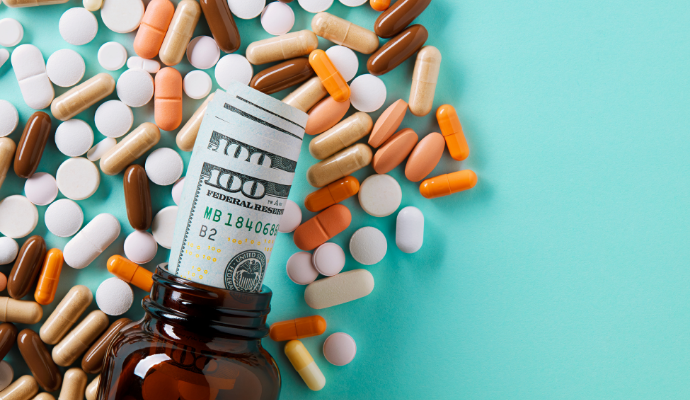Prescription Drug Spending Expected to Reach $400B in 2025
An IQVIA analysis found that new brand launches will contribute to $133B in prescription drug spending growth through 2025, which is higher than previous years.

Source: Getty Images
- Total net prescription drug spending is expected to reach $380 billion to $400 billion in 2025, an increase from $359 billion in 2020, according to an IQVIA analysis.
This forecast is fairly unchanged from the pre-pandemic level, despite the disruptions from COVID-19 and the short-term impact.
New brand launches are expected to continue at record levels and will contribute about $133 billion in spending growth through 2025. This is slightly higher than the past five years. Net prices for protected brands could decline up to three percent per year through 2025.
These numbers reflect an increase in competition between manufacturers and negotiations by payers. Losses of exclusivity are expected to result in $128 billion in lower brand spending through 2025. This includes $39 billion from branded biologics as the biosimilar market continues to grow.
Total saving to payers due to biosimilars are forecasted to be $133 billion over the next five years. Immunology, oncology, and neurology will be the main sources of growth through 2025, researchers explained in the report.
Specifically, oncology spending will exceed $110 billion by 2025, up from $72 billion in 2020 and is expected to continue at a slower growth rate due to the impact of biosimilars and new drug launches focused on rare cancers.
Diabetes spending is expected to decline two to five percent on a net basis through 2025 due to heightened competition. Immunology is expected to exceed $130 billion in the US by 2025, with growth slowing after 2023 due to the launch of various biosimilars.
“Throughout the COVID-19 pandemic, the US health system demonstrated resilience and flexibility, recovering toward its pre-pandemic levels of activity and progressing into 2021,” researchers stated.
Currently, specialty medicines account for nearly 53 percent of spending, up from 27 percent in 2010 and driven by growth in autoimmune and oncology therapies.
During the first quarter of 2021, the use of key health services was at 82 percent of pre-COVID-19 levels, an increase from 42 percent at the peak of the first wave of the pandemic last April.
Elective procedures were 15 percent of normal at the peak of lockdowns last year and have returned to 80 percent, according to the report. Delayed procedures range from hip and knee replacements to scheduled procedures that are not optional.
Additionally, tests used to screen or monitor cancer decreased significantly, leaving an 11 to 23 percent deficit in key tests.
In 2020, a total of 6.3 billion prescriptions were dispensed with growth slowing to 1.7 percent after adjusting for the increased use of 90-day prescriptions for chronic therapies. The growth of prescription medications has been mainly driven by the older population’s greater use of medicines for chronic diseases.
Chronic prescriptions currently make up about 80 percent of dispensed prescriptions and are increasingly dispensed in three-month supplies.
But some acute therapy areas had declined in usage in 2020, which was mostly due to disruptions from the pandemic.
